Gardening in January is full of variety: in addition to cutting trees and bushes, harvesting and sowing are also on the agenda.
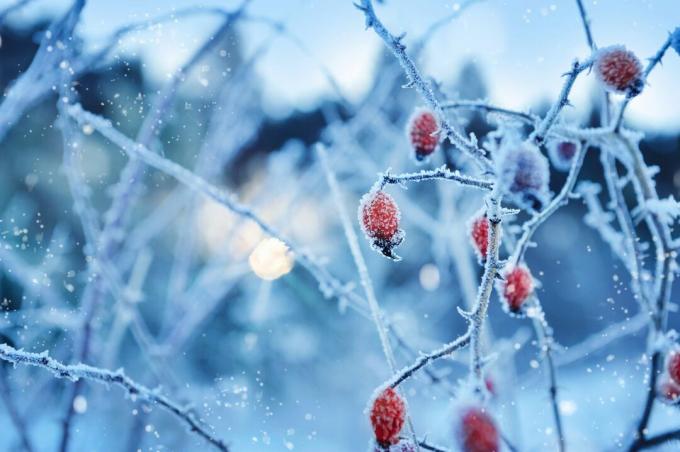
Even if the garden seems to start the new year in absolute calm in January, it still needs regular care at this time of year. In fact, there is quite a bit of gardening to do in the first month of the year. For example, January is known to be a good month for trimming trees and shrubs. But even the vegetable garden does not lie still and silent in January, but seasonal vegetables can still be harvested and plants for the coming spring can be brought forward. In our article, we will tell you what work is due in the garden in January and what gardening tips you should know for January.
"Contents"
-
The vegetable garden in January
- What to sow in January
- Seasonal vegetables in January
- More work in January in the vegetable garden
-
The ornamental garden in January
- What blooms in January?
- What flowers can you plant in January?
- More gardening work in January
- The orchard in January
- The lawn in January
- Support garden animals and insects in January
- Caring for houseplants properly in January
The vegetable garden in January
When thinking about gardening in January, the vegetable garden rarely comes to mind. In fact, you can continue to cultivate the vegetable garden in January: If you have made provisions in the fall, you will still be able to harvest delicious vegetables in January. But you can also start sowing seeds on the windowsill in January – you just have to do without planting vegetables in January due to the cold weather. The most important task in the vegetable garden in January, however, is planning: bring your gardening calendar in January up to date and enter all important dates such as sowing, planting or fertilizing in it a. Also remember crop rotation and appropriate bed neighbors into account and determine exactly which plants will go into which bed this year should - so you have an optimal overview and can be well prepared for the new gardening year start.
What to sow in January
If you look at your garden in January, you often don't think about sowing in view of the cold temperatures and adverse weather conditions. In fact, gardening in January also includes the cultivation of new plants: the first vegetable plants can already be sown and grown on the warm windowsill. You can even grow particularly robust types of vegetables in the greenhouse or in the cold frame sowing. Here we have summarized for you what you can still sow in January.
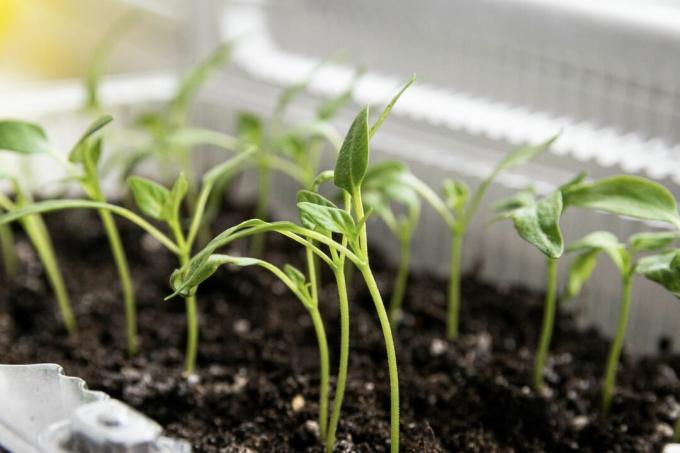
What to sow in January
windowsill: Artichokes, eggplant, broccoli, chili, kohlrabi, cress, microgreens, peppers, physalis, leek, lettuce, sprouts
Glasshouse: garden cress, lamb's lettuce, radish, spinach, white cabbage, winter purslane, winter cress
cold frame: radishes, spinach
bed: wild garlic, woodruff
tip: With a nutrient-poor, special seed soil like our peat-free Plantura Organic Herb & Seed Soil the cultivation of vegetables and co. succeeds particularly well.
Seasonal vegetables in January
Not only sowing, but also harvesting is part of gardening in January. Those who have taken precautions in summer and autumn can now look forward to fresh vegetables from their own garden. However, when harvesting seasonal vegetables in January, make sure you choose days that are as frost-free as possible. Especially if the plant is not harvested completely, but only some leaves, frost is an additional stressor for the plant and can lead to the plant dying.
Seasonal vegetables in January
bed: Mushrooms, kale, parsnips, leeks, radicchio, Brussels sprouts, black salsify, turnips, Jerusalem artichoke, savoy cabbage
Glasshouse: Chicory, lamb's lettuce, celeriac, spinach

More work in January in the vegetable garden
Of course, in the vegetable garden in January there is not only sowing and harvesting, but also some other gardening work. We have summarized the work involved in our garden tips for January.
Build cold frames: Cold frames are a great way to start planting vegetables in early spring. With a little manual skill, you can use the extra time in January and build your own cold frame for earlier sowing.
Protect greenhouse from snow: If January is particularly snowy, you should keep a close eye on your greenhouse. Especially in the case of unheated greenhouses with a low roof pitch, the masses of snow tend to remain on the roof panels and, in the worst case, can cause them to break. You should therefore regularly clear the roof of your greenhouse with a snow plow or a broom.
Control stocks: Many types of vegetables such as carrots, potatoes or beetroot can be kept over the winter due to their excellent storage properties. Regular checks for rotten spots are necessary so that the supplies last a long time - you should sort out affected vegetables to prevent them from spreading to the other vegetables.

The ornamental garden in January
The ornamental garden impresses in January with its very own magic: In addition to the fascinating sight of Hoar frost on perennials and grasses, you can also see enchanting blossoms every now and then, which wind and weather defy While the garden gradually comes back to life in January, the gardener can also slowly become active again in January and do the first gardening work in the ornamental garden.
What blooms in January?
When the first delicate flowers appear in January and even defy the cold and snow, this is an almost magical sight. No wonder, then, that winter flowering plants are extremely popular with gardeners. But which flowers bloom in January? We'll tell you which plants already bear particularly beautiful flowers in January.
What blooms in January?
Flowers and perennials: Christmas Rose, Lenten Rose, Snowdrop, Snow Heather, Small Winterling
shrubs: winter bloom (Chimonanthus praecox), Winter Snowball (Viburnum farreri), winter mahonia (mahonia x media ‘Winter Sun’), Winter Jasmine (Jasminum nudiflorum), winter cherry (Prunus subhirtella ‘Autumnalis’), witch hazel (witch hazel spec.)
What flowers can you plant in January?
Even if January with its cold weather seems anything but friendly to us, it is still possible to plant or sow flowers. especially the Sowing cold germs should not be forgotten when gardening in January: Christmas rose (Helleborus niger), aconite (aconite) and Co need the low temperatures to be able to germinate in spring. But what else can you plant in January? In fact, it is possible to plant flower bulbs in January. Although autumn planting is recommended for most bulbs, if you find some bulbs that you have forgotten, there is no problem planting them now. who daffodils (Narcissus), Tulips (Tulipa) or crocuses (Crocus) in January, but has to wait for frost-free weather, since planting is almost impossible when the ground is frozen. It is also known that the Flower Bulb Plants delayed rooting and later flowering occurs again and again in January. Growth disturbances should be expected, especially when planting tulips in January, but also when planting daffodils in January. However, these only appear in the first year - the plants flower the following year at the same time as their relatives planted in autumn.
What flowers can you plant in January?
cold germinator: Cyclamen, Astilbe, Christmas Rose, Monkshood, Cornflower, Pasqueflower, Poppy, Peony, Cowslip, Globeflower
onion bloomers: Crocus, daffodil, snowdrop, tulip
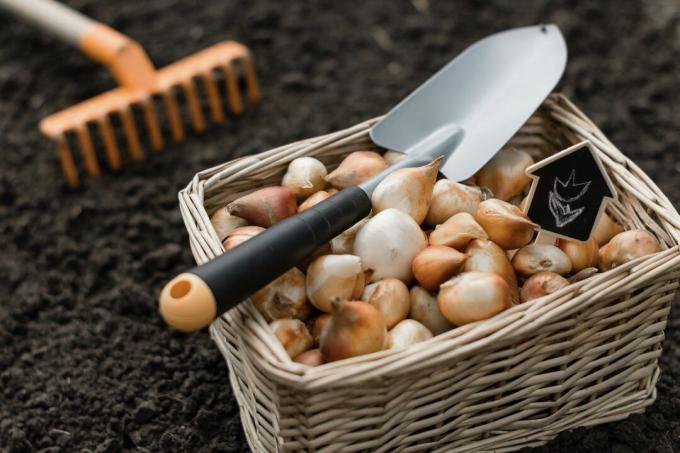
More gardening work in January
In order to be able to admire your ornamental garden in all its splendor in the coming year, gardening is not just about planting in January. We have summarized what other work needs to be done in our garden tips for January.
Cut off foothills: In many trees, such as sea buckthorn (Hippophae rhamnoides), willow (Salix) or lilac (Syringa), you can see numerous root suckers sticking out of the ground in January. If you don't want your plant to multiply uncontrollably in the garden, you should grab your spade now. When gardening in January, pinch off the root suckers and then remove them from the ground.
Road salt protection: Hedges and bushes near the road in particular can suffer from the use of road salt in January and, in the worst case, even die. In the best case, the plants should not come into contact with road salt if possible. However, if this is not possible, it is important to grab the water hose as quickly as possible. Once the ground is no longer frozen, it helps to water the plants copiously to minimize the concentration of salt in the soil and prevent salt damage.
Use the Christmas tree sensibly: If you banish your Christmas tree from your house in January, you should definitely not throw it away. Instead you can Excellent recycling Christmas tree: The brushwood is a great protection against the cold, which is particularly loved by sensitive perennials.

The orchard in January
Even if there is unfortunately no more fruit to be harvested in the orchard in winter, it should never be neglected. On the contrary – if you want to look forward to a rich harvest in the coming year, you should use the gardening in January to take special care of your orchard. In fact, the first month of the year is not just for Pruning apple trees (penalty), but also for the propagation of some berry bushes. You should also use the time in January to check your stored fruit and, if necessary, sort out fruit with rotten spots so that the rot does not spread to the other fruits.
Caring for strawberries: strawberries (Fragaria) planted in late summer will need some help in the garden in January. while the Strawberries overwinter, it can happen that frost pushes up the root ball. Gently push the root ball back into the soil to protect the delicate roots from the elements. You can also remove diseased or dead leaves from the plant at the same time.
Propagating Hazelnut: Who another hazel (Corylus avellana) should not miss January. By shedding young ground shoots, you can easily grow a new plant in frost-free weather. For this purpose, a narrow, deep slit is dug in January, in which the ground-level shoot is placed so that it can stand up as vertically as possible. By next autumn the shoot will have formed new roots in the soil and can then be separated from the mother plant.
Cut pome fruit: Pome fruit such as apples, pears (Pyrus) or quinces (Cydonia oblonga) can be cut on days with a temperature above -5 °C. At the Pruning the fruit trees However, care should be taken to choose a day that is as dry as possible for the cut - this minimizes the risk of pathogens penetrating through the cuts.
Grafting fruit trees: If you want to graft your fruit trees, you should definitely use January. During this month, winter hand grafting can still be carried out on potted and bare-root trees. It is also possible to harvest scions from pome fruit until mid-January, but only on frost-free days.
Propagating gooseberries and currants: gooseberries (Ribes uva crispa) can be easily propagated in the garden in January via cuttings if you have not done this work in late summer. For this purpose, a one-year-old gooseberry cane is cut into pieces 20 to 30 cm long, defoliated and then placed in a pot with sandy soil. Incidentally, this procedure works just as well with Propagating currants (Ribes nigrum & Ribes rubrum).
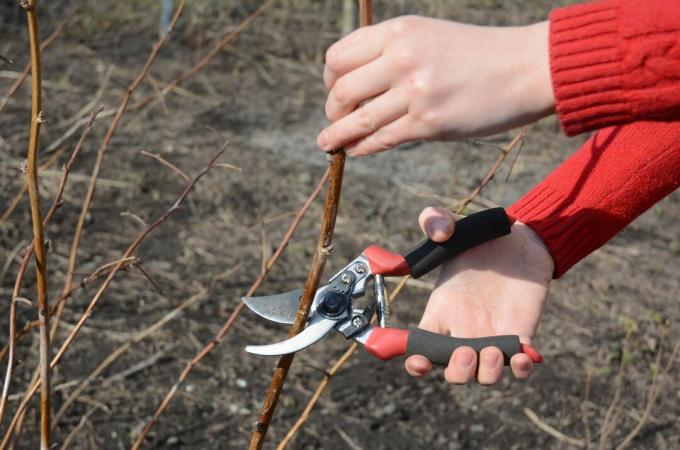
The lawn in January
Many gardeners value a tidy, green lawn. But do you have to take care of the lawn in January? No - in fact it is even better to leave the lawn alone in January if possible. At this time of year, the grasses are in a growth pause, so maintenance measures are not appropriate. Do you have that in the fall? Lawn winterized, so there is no further work to be done in January.
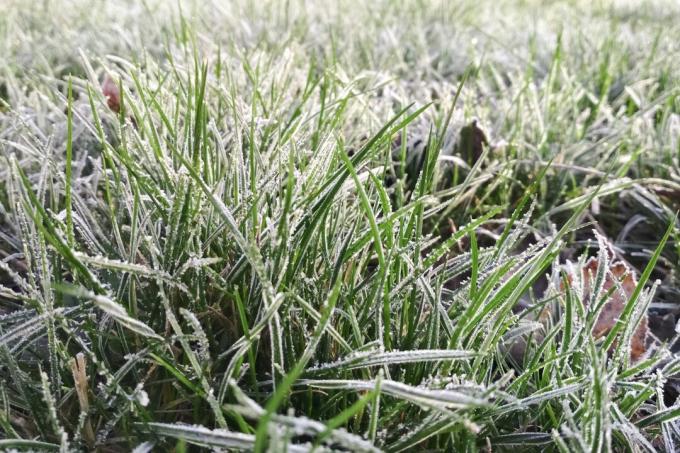
Support garden animals and insects in January
Surviving in the garden in January presents many garden animals and insects with particular challenges: on the one hand, the cold, wet weather that the animals find suitable shelter, on the other hand, the sources of food are often lost in winter meager. Because of this, many are Garden animals in winter dependent on additional human help. We have summarized how you can help the animals in our garden tips for January.
Postpone New Year's Resolutions: Have you decided to tidy up your garden this year and get rid of all the messy corners? A good resolution – but if possible, you should only pursue it in March or April. In fact, piles of brushwood, piles of leaves or fallen piles of wood are a thorn in the side of many people, but garden animals such as hedgehogs or toads like to use them as shelter. If they are suddenly robbed of their winter quarters while they are sleeping, it often has serious consequences Consequences for the friendly animals - so it's best to postpone cleaning up until later Time.
feed birds: Since birds are not among the animals that fall into hibernation, they are particularly dependent on a continuous feed intake in winter. Unfortunately, in many gardens there are only a few left native shrubs for birds, which also bear berries as potential food in winter. It is all the more important to help the birds with the display of birdseed. Make sure you have a varied feed with many different feed components - like this Plantura loose feed with high-quality fats - to use. This can be ingested not only by grain eaters, but also by soft food eaters.

January is a particularly difficult time for garden animals. You can find out how you can help the little animals in our article “Garden animals in winter: how to help?“
Caring for houseplants properly in January
While the garden is still dormant in January, indoor plants are still a green eye-catcher. In order for this to remain so in the long term, however, it is important to pay special attention to indoor plants in January. In particular, the dry, hot air causes problems for many houseplants, which is why the care of the houseplants should not be neglected at this time.
Take care of Christmas plants: Christmas cactus, poinsettia and azalea gave us a lot of joy in December. So that the plants remain healthy in January, they should be moved from the warm room to a cool room with plenty of light. You should also water all Christmas plants regularly during flowering.
Customize care: Most indoor plants take a break from growing in winter. During this time, the care of the plants must be adjusted accordingly: Indoor plants should never be fertilized in January. Even when watering, you can often extend the intervals, since the plants often need less water. Instead, you should use the spray bottle more often to counteract the dry air from the heating, which causes problems for many indoor plants in January.
Control for pests: Unfortunately, dry heating air and high room temperatures in winter favor the spread of pests such as scale insects, spider mites or whiteflies. Therefore, check your indoor plants regularly for the first signs of pest infestation. If your plants are actually infested by the small insect pests, it is advisable to quickly treat them with an effective pesticide, such as ours Plantura Pest Free Neem, or an effective home remedy to take action against them.
Avoid lack of light: Exotic indoor plants in particular often have to struggle with a lack of light in January. To avoid this, you can fall back on a few tips: Plants should be planted in January at best stand directly on a south-facing window, as this is where they make the best use of the natural sunlight be able. By placing a mirror behind the plants, the sparse sunlight can be used particularly effectively. A special plant light can also help with plants that depend on a high light intensity.

You can find out what work is due in the next month in our article on the Gardening in February.



